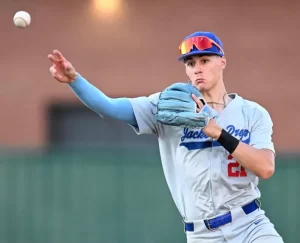White Sox Draft Strategy is an Interesting One
With the 2011 MLB Draft now in the books, I want to take a look at what appears to be a very interesting draft strategy from our White Sox.
After day 2 and the first 30 rounds of the draft I was feeling a little depressed and let down by the direction the Sox had decided to go. 29 of the first 30 picks by the Sox were college players, and one was a “no school” player. It felt like the Sox were taking “safe” drafting and “cheap” drafting to the next level. And perhaps they were, but on day 3, with their final 20 picks, they took 11 high school players, some of which are very legitimate talents.
I think this is potentially a very smart way to go. The talented college players will be drafted early. They’re safer and cheaper than the high school talent, which may have more potential, but also comes with a much higher price tag and lower success rate. Everybody needs affordable bullpen pieces, back of the rotation starters, utility players, bench fillers and that’s what you’re getting from the likes of Jeff Soptic, Kyle McMillen, Kevan Smith, Ian Gardeck and David Herbek. Taking what you perceive to be the college talent while it’s still available, and then loading up on talented high school players that inevitably fall (as they do every year) later on in the draft, makes a lot of sense.
Firstly, the opportunity cost is much lower. If you take a Bryce Mosier in the 33rd round and don’t sign him, big deal, you lose your 33rd round pick. Whereas if you take a Matthew Grimes in the 4th round and don’t sign him, not only do you lose your 4th round pick, but you also lose a very talented college player that you could have signed to slot.
Secondly, it allows you to draft a better overall collection of talent. The difference between an 8th round college player and a 40th round college player is huge. The difference between an 8th round high school player and a 40th round high school player is not necessarily that big. You can still get someone like Bryce Mosier late in the draft, who was projected as a possible top 10 round pick. It’s much, much more difficult to find college players of that quality late in the draft.
This strategy is of course completely dependent on actually being able to sign the high school picks, and it could be that I’m giving the Sox far too much respect in that regard. They may have no intention of signing any of these 11 high school players, but they may also have earmarked the $1m or so that was saved from not having a first round pick, with the intention of going over-slot on 5 or 6 of these high school talents, and if that’s the case, I’ll applaud the strategy.






